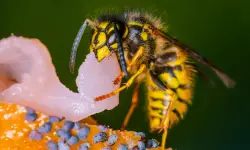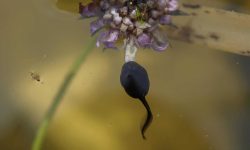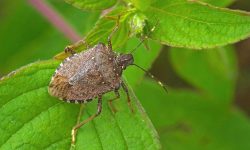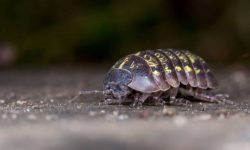Penguins are truly remarkable birds, perfectly adapted to life in the world’s coldest oceans. From the icy coasts of Antarctica to the temperate islands near the equator, they have evolved to thrive in diverse environments. Their diet plays a crucial role in maintaining the strength, energy, and insulation they need to survive in these often harsh conditions.
Unlike most birds, penguins can’t fly through the air — but they are expert divers and hunters beneath the waves. Their diet revolves around what the ocean provides, from fish and squid to tiny crustaceans. Every meal helps them store fat, build muscle, and fuel their long swims through freezing waters.
Understanding what penguins eat gives us a glimpse into their incredible survival strategy. Their feeding habits vary by species and season, yet every bite reflects their adaptation to life in one of the most extreme environments on the planet.
Understanding the Penguin Diet
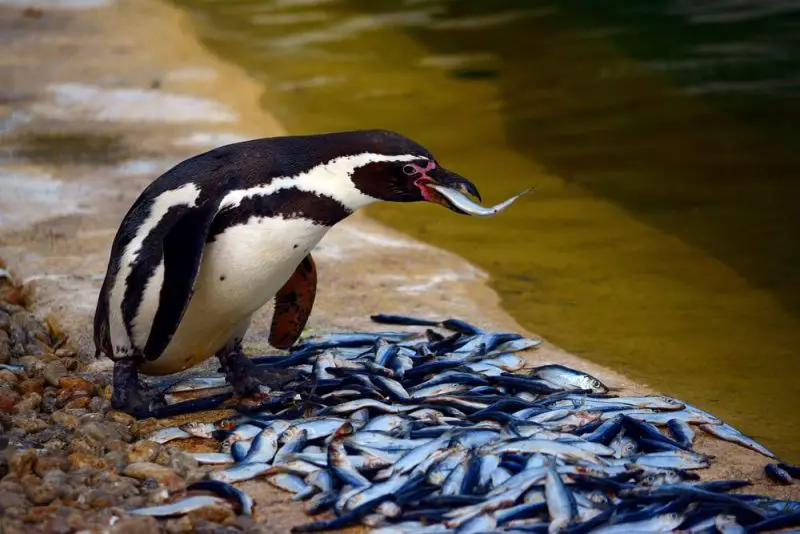
The Marine Hunter’s Lifestyle
Penguins are carnivorous seabirds whose diet is entirely based on marine life. They hunt underwater, using powerful flippers to propel themselves swiftly through the ocean. Their sharp beaks and barbed tongues help grip slippery prey like fish and squid.
Most penguins dive to depths between 30 and 60 feet, though some species, like the Emperor Penguin, can plunge over 1,500 feet in search of food. These hunting skills make them efficient predators, perfectly suited for their environment.
Nutritional Needs and Energy Balance
Because penguins live in cold climates, their diet must be rich in protein and fat. Fish and krill provide the high energy needed to maintain body heat and endurance during long swims or breeding seasons.
Their bodies convert this energy into a thick layer of fat that insulates them against freezing water. Proper nutrition also supports feather health, chick development, and overall survival during long periods without food, such as molting or incubation.
Seasonal and Regional Variations
Different penguin species eat slightly different foods depending on where they live. Emperor and Adélie Penguins in Antarctica rely heavily on krill and small fish, while Galápagos Penguins eat anchovies and sardines. During the breeding season, they consume more nutrient-dense prey to sustain their chicks.
This dietary flexibility allows penguins to adapt to changing ocean conditions and prey availability — a vital trait in a rapidly warming world.
20 Foods Penguins Love the Most
1. Krill
Krill are the cornerstone of many penguins’ diets, especially Antarctic species like the Adélie and Chinstrap Penguins. These tiny shrimp-like crustaceans form massive swarms in cold waters.
Krill are packed with protein, omega-3 fatty acids, and antioxidants — everything penguins need for energy and insulation. They’re especially important during breeding season when parents feed their chicks regurgitated krill.
Declines in krill populations due to climate change and overfishing pose serious threats to penguin survival, highlighting their ecological dependence on these creatures.
2. Fish
Fish make up a large portion of most penguins’ diets. They consume species such as anchovies, sardines, silverfish, and lanternfish.
Fish provide dense calories, protein, and essential fatty acids that keep penguins strong and agile. Each species of penguin tends to favor certain fish based on availability and water temperature.
Penguins catch fish by diving deep and using precise, lightning-fast movements to snatch them mid-swim.
3. Squid
Squid are another key food source, particularly for Emperor and King Penguins. These cephalopods are high in protein and provide essential minerals like zinc and selenium.
Squid are most abundant in deeper waters, so larger penguins capable of long dives are more likely to hunt them. They swallow their prey whole, using backward-facing barbs on their tongues to prevent escape.
During winter, when krill populations drop, squid become a vital alternative food source.
4. Crustaceans
Beyond krill, penguins also eat small crustaceans like shrimp and amphipods. These creatures provide valuable nutrients, including chitin and carotenoids that enhance feather pigmentation.
Crustaceans are especially common in coastal diets where shallow waters teem with life.
By consuming crustaceans, penguins also play a role in maintaining the balance of marine ecosystems, helping regulate plankton populations.
5. Anchovies
Anchovies are a favorite prey for many warm-water penguin species, including the Humboldt and African Penguins. These small, oily fish are rich in protein and omega-3 fats.
Anchovies school near the surface, allowing penguins to catch them in quick, efficient dives.
Their high nutrient content helps penguins build fat reserves — essential for surviving long breeding seasons and ocean currents.
6. Sardines
Sardines are another key prey species, particularly for Magellanic and Galápagos Penguins. They offer similar nutritional value to anchovies, with dense energy and beneficial fatty acids.
Penguins often hunt sardines cooperatively, forming underwater groups to herd schools together.
This teamwork increases hunting success and strengthens social bonds within penguin colonies.
7. Lanternfish
Lanternfish are deep-sea dwellers that migrate closer to the surface at night. Many penguins take advantage of this behavior, hunting them under low light conditions.
They’re nutrient-rich, providing protein, vitamins, and natural oils that support penguin health and endurance.
Because lanternfish are widely distributed, they’re an important fallback food during leaner times.
8. Squid Eggs
In addition to adult squid, penguins sometimes consume squid eggs found in floating clusters. These eggs provide concentrated protein and moisture.
They’re easy for penguins to catch and digest, making them a convenient snack between hunts.
Squid eggs are especially valuable for young or recovering penguins that need soft, energy-dense food.
9. Shrimp
Shrimp form a small but significant part of the diet for some species. They’re highly digestible and packed with minerals like calcium and iodine.
In coastal waters, penguins scoop shrimp from sandy bottoms or catch them mid-swim.
Shrimp’s bright pigments may even contribute to the vibrant colors seen in penguin beaks and feathers.
10. Cephalopods
Beyond squid, penguins occasionally eat other cephalopods like cuttlefish. These animals are nutrient-dense, providing amino acids, trace elements, and healthy fats.
Cuttlefish are harder to catch but are an excellent food source during migration seasons when penguins venture farther out to sea.
Their ink sacs and soft bodies make them easier to digest than crustaceans.
11. Icefish
Icefish live in Antarctic waters and are a staple for Emperor Penguins. They have clear blood and high fat content, which provide warmth and calories in frigid environments.
Penguins hunt them under sea ice, sometimes diving for minutes at a time to reach deep schools.
Icefish sustain penguins through long winters when other food is scarce.
12. Amphipods
Amphipods are small crustaceans similar to krill but found in shallower waters. They serve as a backup food when krill populations fluctuate.
Amphipods are rich in protein and antioxidants, supporting penguins’ immune systems.
They also help sustain young penguins during the early foraging stages when larger prey is harder to catch.
13. Copepods
Copepods are microscopic crustaceans that penguins may accidentally consume while hunting. Though tiny, they’re packed with fatty acids and nutrients.
In nutrient-rich regions, copepods form dense clouds that supplement penguins’ main diet.
Their abundance makes them a reliable yet minor source of energy.
14. Euphausiids
Euphausiids, a broader family that includes krill, form a vital part of marine food webs. Penguins rely heavily on these creatures for consistent energy.
They’re small, abundant, and high in essential nutrients like vitamin B12 and calcium.
Euphausiids support both adults and chicks, making them one of the most important foods in the penguin diet.
15. Squat Lobsters
In certain coastal regions, penguins catch small squat lobsters, which resemble a mix between shrimp and crab.
These crustaceans provide extra protein and chitin, strengthening feathers and skin.
Squat lobsters are more common in the diets of temperate-water penguins such as the Magellanic Penguin.
16. Jellyfish
Though not a major food source, some penguins eat jellyfish when other prey is scarce. Jellyfish provide hydration and small amounts of protein.
They’re easy to catch and swallow whole, but penguins avoid species with strong stings.
This opportunistic feeding behavior shows how adaptable penguins can be in changing ocean conditions.
17. Marine Worms
Marine worms living in sandy seabeds occasionally become part of a penguin’s meal. They’re rich in protein and easy to digest.
Penguins typically consume them while foraging close to shore or during low tide.
Though minor in quantity, they help diversify the diet and support healthy digestion.
18. Small Crabs
Penguins sometimes eat juvenile crabs, especially in coastal habitats. These provide protein, calcium, and trace minerals for bone and feather health.
They use sharp beaks to crush soft shells and access the nutritious meat inside.
Crabs are an opportunistic food source, often eaten during seasonal abundance.
19. Plankton
Penguin chicks sometimes consume plankton when learning to forage. It’s easy to swallow and provides basic nutrition.
Plankton helps young penguins build digestive strength before tackling larger prey.
This stage marks a critical step in developing their hunting skills.
20. Water
Although not food, water is essential for penguin survival. They drink by swallowing seawater, then filtering out salt through special glands above their eyes.
This adaptation allows them to stay hydrated even in marine environments.
Fresh snow and ice also serve as secondary water sources during colder months.
FAQs About What Penguins Eat
Do Penguins Eat Only Fish?
No. While fish make up a large part of their diet, penguins also eat krill, squid, and other small sea creatures depending on their habitat.
How Do Penguins Catch Their Food?
They dive underwater, using powerful flippers and sharp vision to spot prey. Their beaks and tongues are designed to grip slippery animals securely.
Do Penguins Chew Their Food?
No. Penguins swallow their prey whole. Their stomach acid is strong enough to digest bones and shells completely.
How Much Do Penguins Eat Each Day?
An adult penguin can eat between 2 and 5 kilograms (4–11 pounds) of food daily, depending on species, size, and season.
What Do Baby Penguins Eat?
Chicks eat regurgitated food from their parents, mainly partially digested fish and krill, which are easy to swallow and rich in nutrients.
Do Penguins Drink Saltwater?
Yes. Penguins can drink seawater because they have special glands that remove excess salt from their bodies.
Do All Penguin Species Eat the Same Foods?
No. Diets vary depending on location — Antarctic species rely more on krill, while tropical species eat anchovies, sardines, and small fish.
Can Penguins Eat on Land?
Usually not. Penguins swallow food underwater. On land, they may feed chicks but rarely eat themselves.
What Happens If Penguins Can’t Find Food?
When food is scarce, penguins rely on fat reserves built up during feeding seasons. Prolonged shortages, however, can lead to population decline.
Do Humans Affect Penguin Diets?
Yes. Overfishing and climate change reduce their main food sources, especially krill and fish, forcing penguins to travel farther for food.
Final Thoughts
Penguins are remarkable examples of adaptation and resilience, thriving in some of the planet’s most challenging environments. Their ocean-based diet — from krill and fish to squid and crustaceans — fuels their strength, endurance, and survival.
Understanding what penguins eat not only reveals the beauty of marine ecosystems but also underscores how fragile they can be. Protecting our oceans and managing sustainable fishing practices ensures that these extraordinary birds continue to glide through icy waters for generations to come.

